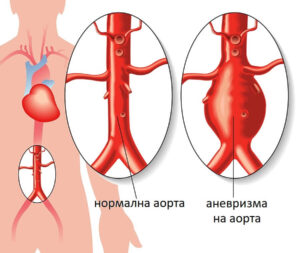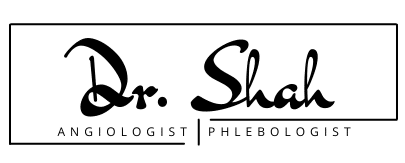arterial diseases
aneurysm of aorta
what is an aortic aneurysm?
An aortic aneurysm is an abnormal bulge that appears in the wall of the main blood vessel (aorta) that carries blood from your heart to your body. Aortic aneurysms can occur anywhere in the aorta.
Aortic aneurysms include:
Abdominal aortic aneurysm. An abdominal aortic aneurysm occurs along the part of the aorta that passes through the abdomen.
Aneurysm of the thoracic aorta. A thoracic aortic aneurysm occurs along that part of the aorta that passes through the chest cavity.
In some cases, the individual may have an abdominal aortic aneurysm and a thoracic aortic aneurysm.
The presence of an aortic aneurysm increases the risk of developing aortic dissection.
Aortic dissection occurs when a rupture develops in the inner layer of the aortic wall. This causes one or more of the layers on the aorta wall to separate, which weakens the aorta wall. The presence of an aortic aneurysm also increases the risk of an aneurysm that can rupture (rupture).
What are the reasons?
Common causes include:
Hypertension
Atherosclerosis
Infection
Trauma
Hereditary or acquired connective tissue disorders (e.g. Marfan syndrome, Ehlers-Danlos syndrome)
Aneurysms are usually asymptomatic, but can cause pain and lead to ischemia, thromboembolism, spontaneous dissection, and rupture, which can be fatal.

What are the possible complications?
The consequences depend on the size of the rupture. A large rupture can be fatal, and a small (sometimes called a leak) can cause warning symptoms that allow people to seek medical attention.
A blood clot (thrombus) often develops in the aneurysm because blood flow inside the aneurysm is slow. The clot can extend along the entire wall of the aneurysm. A blood clot can become loose (turn into an embola), pass through the bloodstream, and block arteries. Aneurysms in the suboccult arteries are more likely to produce embolisms than aneurysms in other arteries.
diagnostics
The diagnosis is made by imaging tests such as:
Ultrasonography
painless, fast and non-invasive test in which the scan accurately maps the anatomy and physiology of the blood vessel
CT angiography
CT scans generate X-rays to produce cross-sectional images of the body. Chest CT scan is used to diagnose aortic dissection with injected contrast fluid. The contrast makes the heart, aorta and other blood vessels more visible in CT pictures.
Magnetic resonance angiography
MRI angiography uses a magnetic field and pulses of radio wave energy to take three-dimensional images of the body.
Orthography
With the help of X-ray equipment and a contrast medium, the aorta is visualized.
Treatment
Unruptured aneurysms can be treatedconservatively, invasively (endovascularly) or surgically, depending on the symptoms, size and location of the aneurysm.Conservative treatmentincludes modification of the risk factor (for example, strict blood pressure control), plusdrug treatment and regular monitoring. Endovascular treatment is carried out by stent graft of the affected aorta. Ruptured aneurysms proceed toimmediate recovery throughopen surgery.

